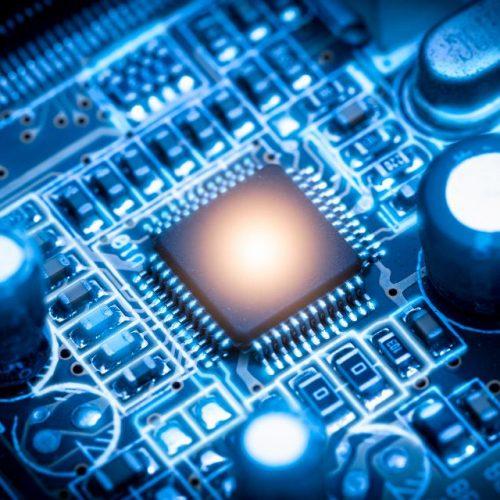The bungled effort to contain African swine fever could result in higher Chinese food costs for years and shows the limits of Beijing’s top-down approach to problems.




Circa 2005
We search for translationally invariant states of qubits on a ring that maximize the nearest neighbor entanglement. This problem was initially studied by O’Connor and Wootters [Phys. Rev. A {\bf 63}, 052302 (2001)]. We first map the problem to the search for the ground state of a spin 1/2 Heisenberg XXZ
Model. Using the exact Bethe ansatz solution in the limit of an infinite ring.
We prove the correctness of the assumption of O’Connor and Wootters that the state of maximal entanglement does not have any pair of neighboring spins.
“down’’ (or, alternatively spins “up’‘).
The unique ability of cuttlefish, squid and octopuses to hide by imitating the colors and texture of their environment has fascinated natural scientists since the time of Aristotle. Uniquely among all animals, these mollusks control their appearance by the direct action of neurons onto expandable pixels, numbered in millions, located in their skin. Scientists at the Max Planck Institute for Brain Research and the Frankfurt Institute for Advanced Studies/Goethe University used this neuron-pixel correspondence to peer into the brain of cuttlefish, inferring the putative structure of control networks through analysis of skin pattern dynamics.
Cuttlefish, squid and octopus are a group of marine mollusks called coleoid cephalopods that once included ammonites, today only known as spiral fossils of the Cretaceous era. Modern coleoid cephalopods lost their external shells about 150 million years ago and took up an increasingly active predatory lifestyle. This development was accompanied by a massive increase in the size of their brains: modern cuttlefish and octopus have the largest brains (relative to body size) among invertebrates with a size comparable to that of reptiles and some mammals. They use these large brains to perform a range of intelligent behaviors, including the singular ability to change their skin pattern to camouflage, or hide, in their surroundings.
Cephalopods control camouflage by the direct action of their brain onto specialized skin cells called chromatophores, that act as biological color “pixels” on a soft skin display. Cuttlefish possess up to millions of chromatophores, each of which can be expanded and contracted to produce local changes in skin contrast. By controlling these chromatophores, cuttlefish can transform their appearance in a fraction of a second. They use camouflage to hunt, to avoid predators, but also to communicate.

Similarly, quantum computing started as a specialized field, only accessible to researchers and scientists. Today, millions of developers can access quantum processors via the cloud, bringing about a surge in early adoption and the identification of hundreds of early applications. We’re already seeing companies apply quantum computers in problems with potential real-world impact — everything from optimizing taxi routes to digital advertising.
A major catalyst for this momentum toward commercialization was the aforementioned emergence of cloud access to quantum computers at accessible price points. Now that the barriers to access have dramatically diminished, we’re seeing three key indicators emerge that signal quantum’s commercial viability: an increase in early adoption from category leaders, the emergence of entrepreneurial “quantum pioneers” and the rise of a supporting ecosystem in the form of independent software vendors (ISVs) and consulting firms.
Rather than representing an entirely different take on the flying car, the helicopter’s new brains are more equivalent to the “self-driving” features you see in contemporary cars — an effort to make vehicles safer and more accessible than ever before.
“Today, we design our lives around traffic and make decisions about where we live and work based on how hard it is to get there,” Mark Groden, Skyryse CEO and founder, said in a statement. “To get there, we need to make urban flying as safe as riding an elevator and as accessible and affordable as riding a bus.”
The technology behind the feat called “Flight Stack” allows for either full or partial autonomous flight — think of it like cruise control on a car.

A new study sheds light on the accumulation of senescent cells and suggests that therapies that remove them could be beneficial both immediately and in the long term for human health and longevity.
Normally, as cells become damaged beyond repair, exhausted, and no longer able to replicate, they are removed from the body via a process known as apoptosis, which is a kind of self-destruct program initiated by the cell, or removed by the immune system. This system acts as a safety net to prevent damaged cells from remaining active and, in the context of cells damaged by mutations, a way to prevent cancer.
Unfortunately, as we age, this disposal system, like many others in our body, begins to falter and ultimately fail. This leads to the accumulation of unwanted, damaged senescent cells in every tissue of our body. This build-up of senescent cells is one of the proposed reasons we age and has been the focus of intense research in the last few years.

Fibre’s role goes beyond keeping our digestive tract in order. It can also help with weight loss or maintenance, control blood sugar, lower cholesterol levels and reduce the risk of heart disease and diabetes.
However, many of us are not hitting our daily recommended amount of fibre — 20g for women and 26g for men.
Also, one in four Singaporeans experience chronic constipation. If you are one of them, here is how you can add fibre to your diet.